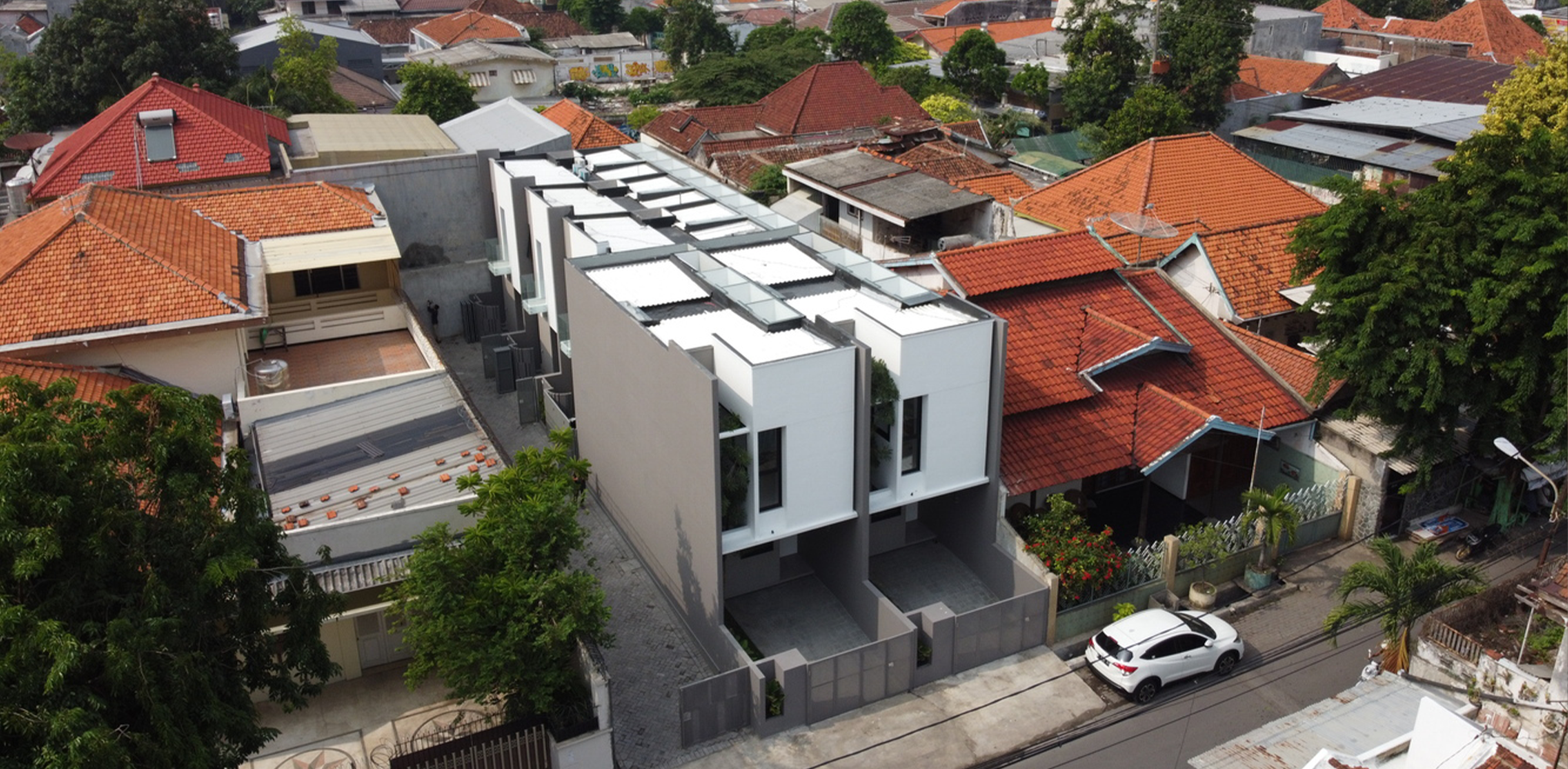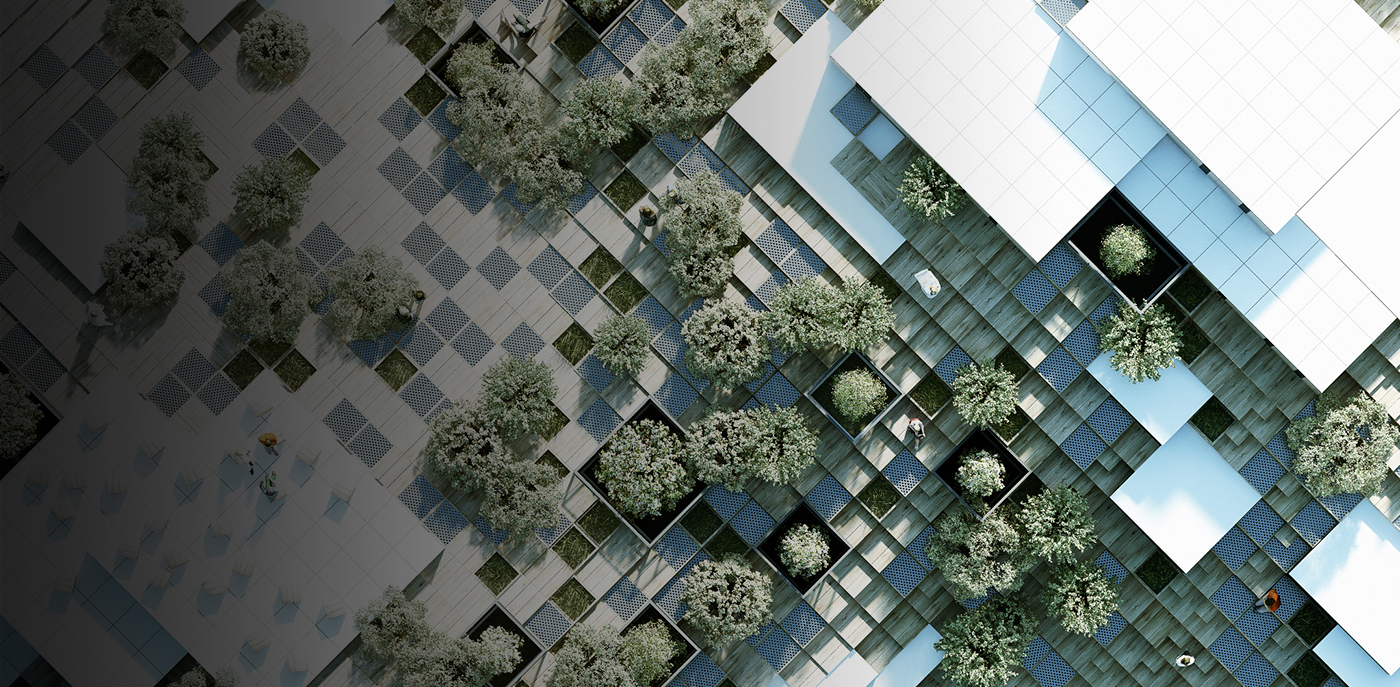The latest edition of “Architizer: The World’s Best Architecture” — a stunning, hardbound book celebrating the most inspiring contemporary architecture from around the globe — is now available. Order your copy today.
Environmental impact is an increasingly urgent consideration in design—and architects are turning to an age-old building material with fresh eyes. These A+Award-winning projects embrace timber screens as a leitmotif, dissolving the distinction between the architectural and natural worlds. Moving beyond timber’s traditional role as cladding or framing material, the rhythmic spacing of wooden louvers invite daylight inside while also offering glimpses outdoors.
The linear shadows cast on the interior floors echo the walls’ linear patterns, creating an immersive atmosphere within. Unlike the straightforward transparency of glass, the visual intrigue of wooden slats rests in their oscillation between porousness and enclosure, shade and privacy, and natural and human-made.
Casa Naila
By BAAQ, Puerto Escondido, Mexico
Jury Vote Winner, 2020 A+Awards, Private House (S< 1,000 sq ft)
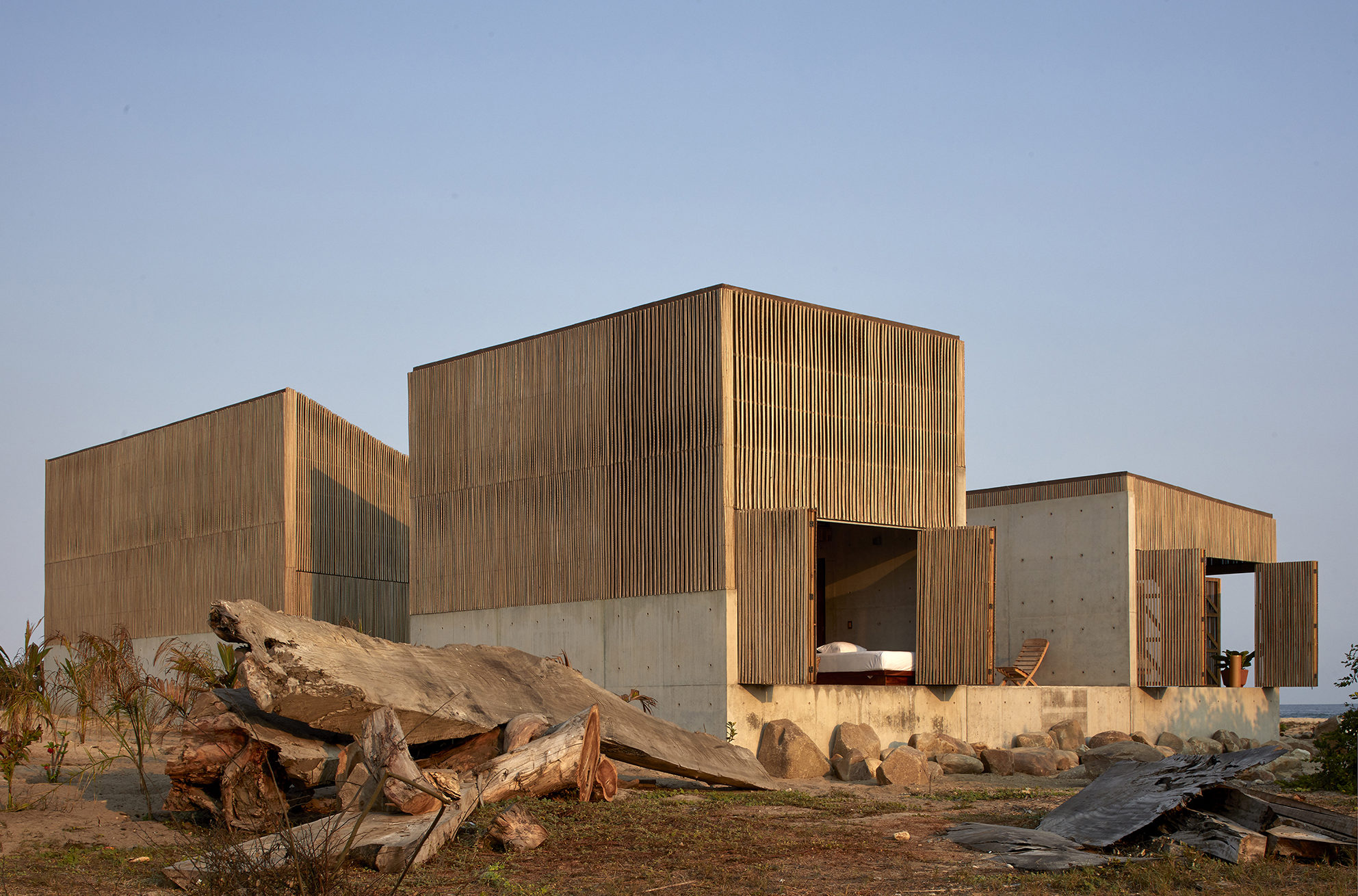
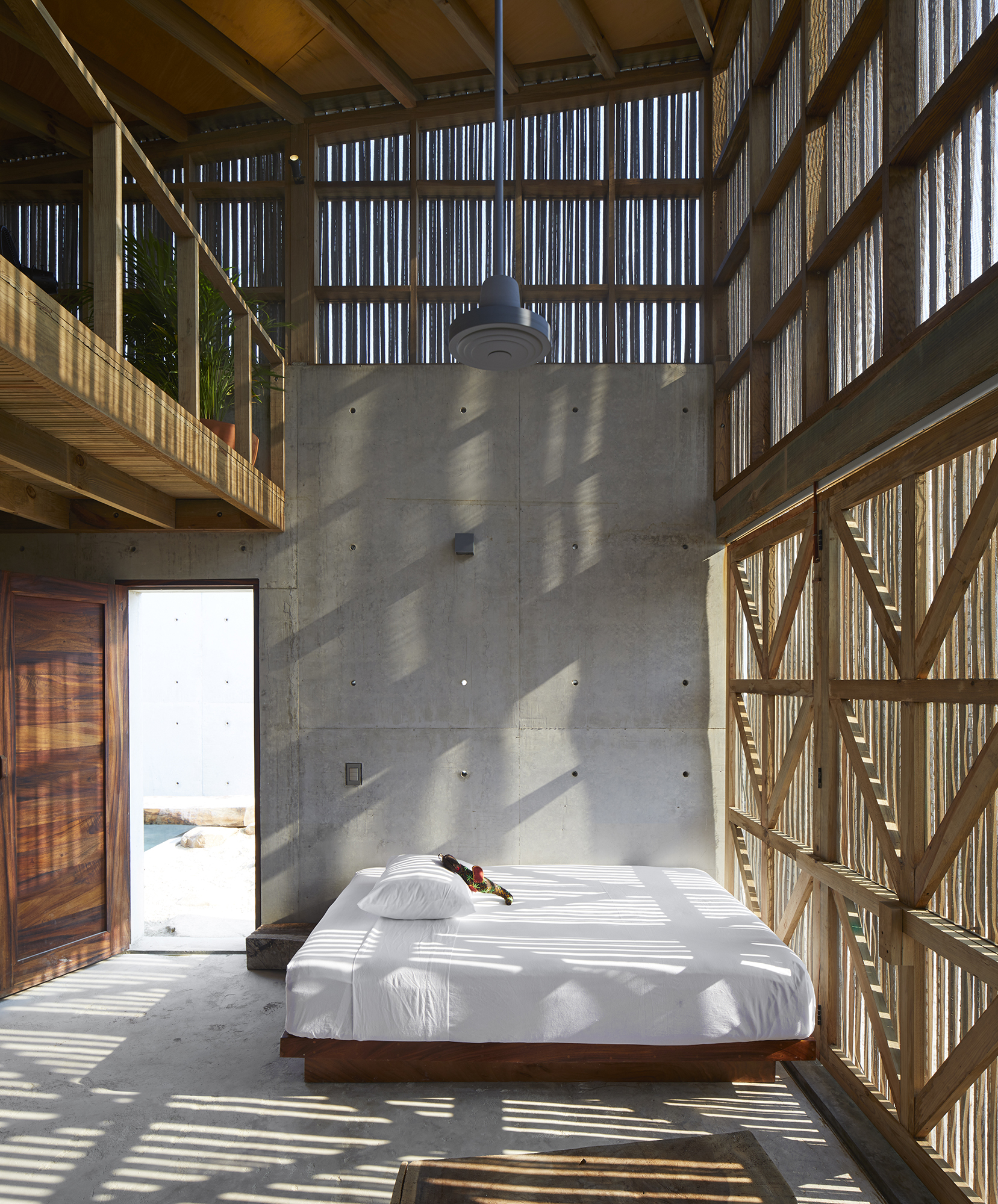
Named for a traditional local song, Casa Naila comprises four timber-frame volumes that pay homage to Oaxaca. The smooth band of concrete that marks the ground floor of each prism is offset by the rhythmic vertical lines of palm bone wood above — a traditional construction system long reserved for beach huts in nearby coastal communities.
The even spacing of the wooden slats on the wall offers glimpses of the Pacific Ocean without sacrificing the unbroken linear statement of the windowless volumes; the openness and permeability of the wooden screens symbolically echo the architects’ decision not to fence off the residential site, allowing residents easy access to the coast and inviting beach visitors to enjoy the courtyard and pool.
Lisbon Wood
By Plano Humano Arquitectos, Lisbon, Portugal
Jury Vote Winner, 2019 A+Awards, Architecture +Renovation
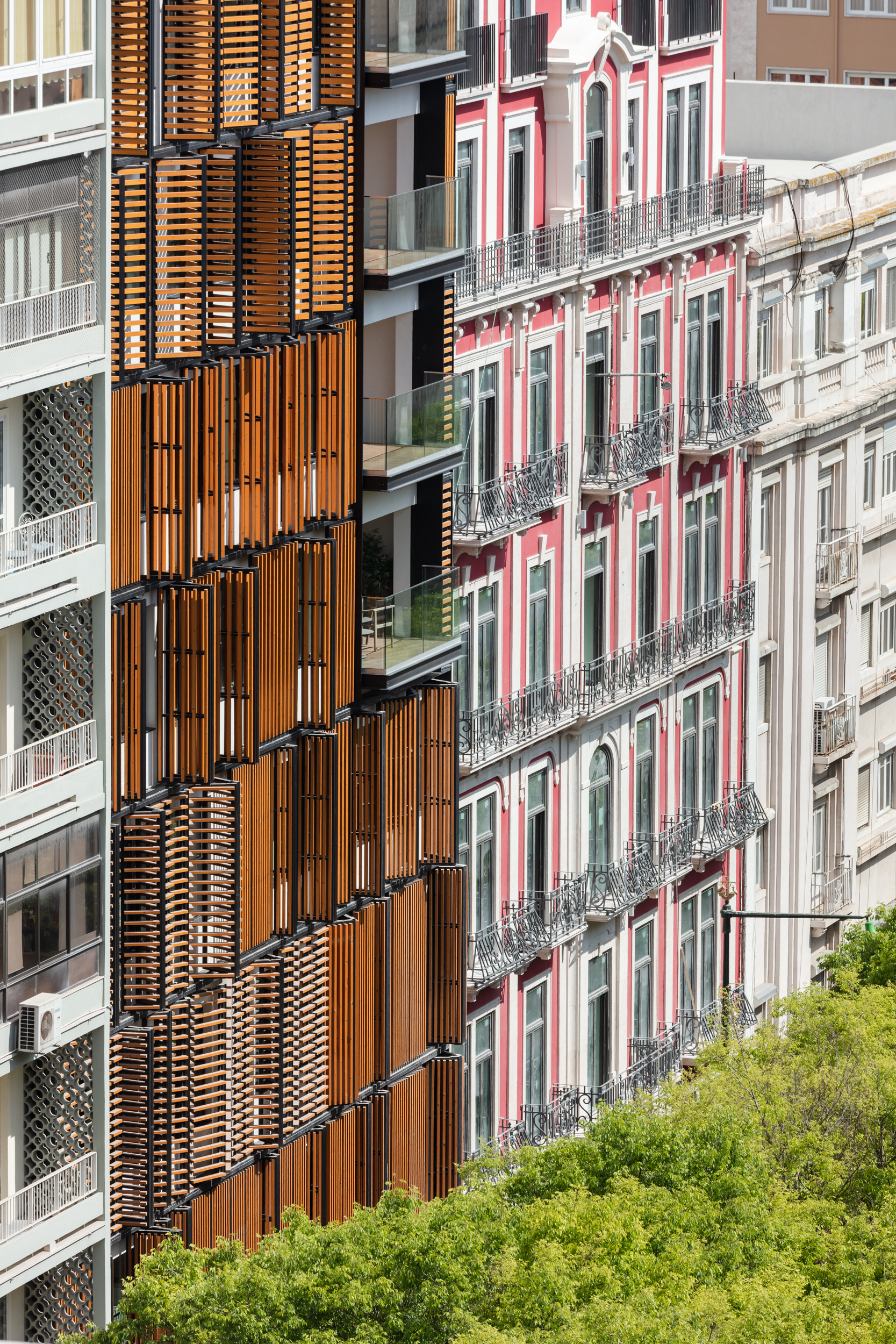
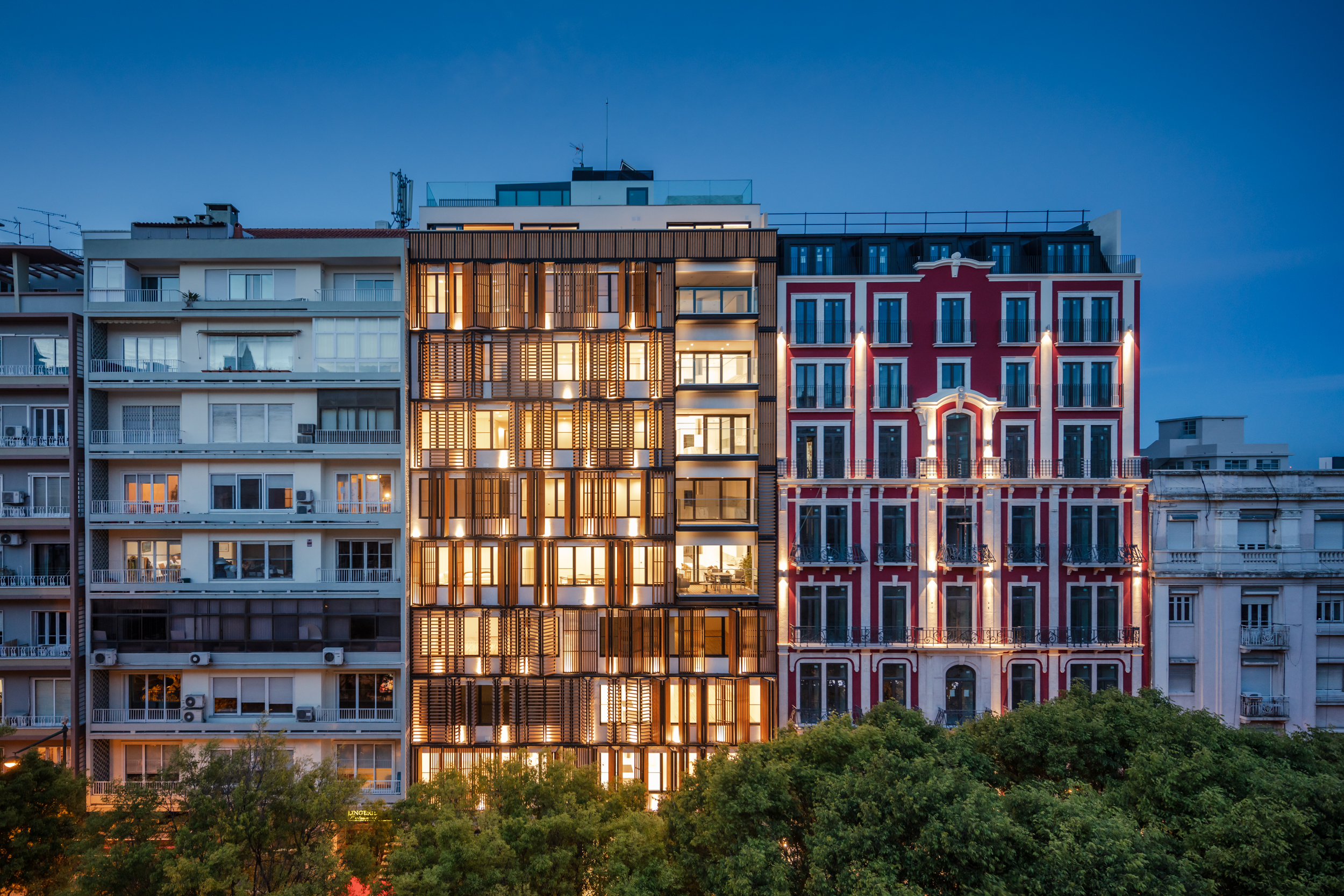 In Portugal, where intricate ceramic-tiles traditionally have faced buildings and colored the streets, the timber panel facade of a new apartment building is redefining the relationship between private space and the urban public.
In Portugal, where intricate ceramic-tiles traditionally have faced buildings and colored the streets, the timber panel facade of a new apartment building is redefining the relationship between private space and the urban public.
Automated shutters made of thermo-modified wood transform the once-neglected building into a lively structure where interior and exterior exist in an ever-changing dialogue. The dynamic wooden slats alternate in horizontal and vertical panels that adapt as the sun moves and seasons change, increasing energy efficiency and offering customizable comfort to residents while subtly updating the traditional streetscape.
The Modular Unit (MU50)
By Teke Architects Office, Turkey
Popular Choice Winner, 2020 A+Awards, Private House (S< 1,000 sq ft)

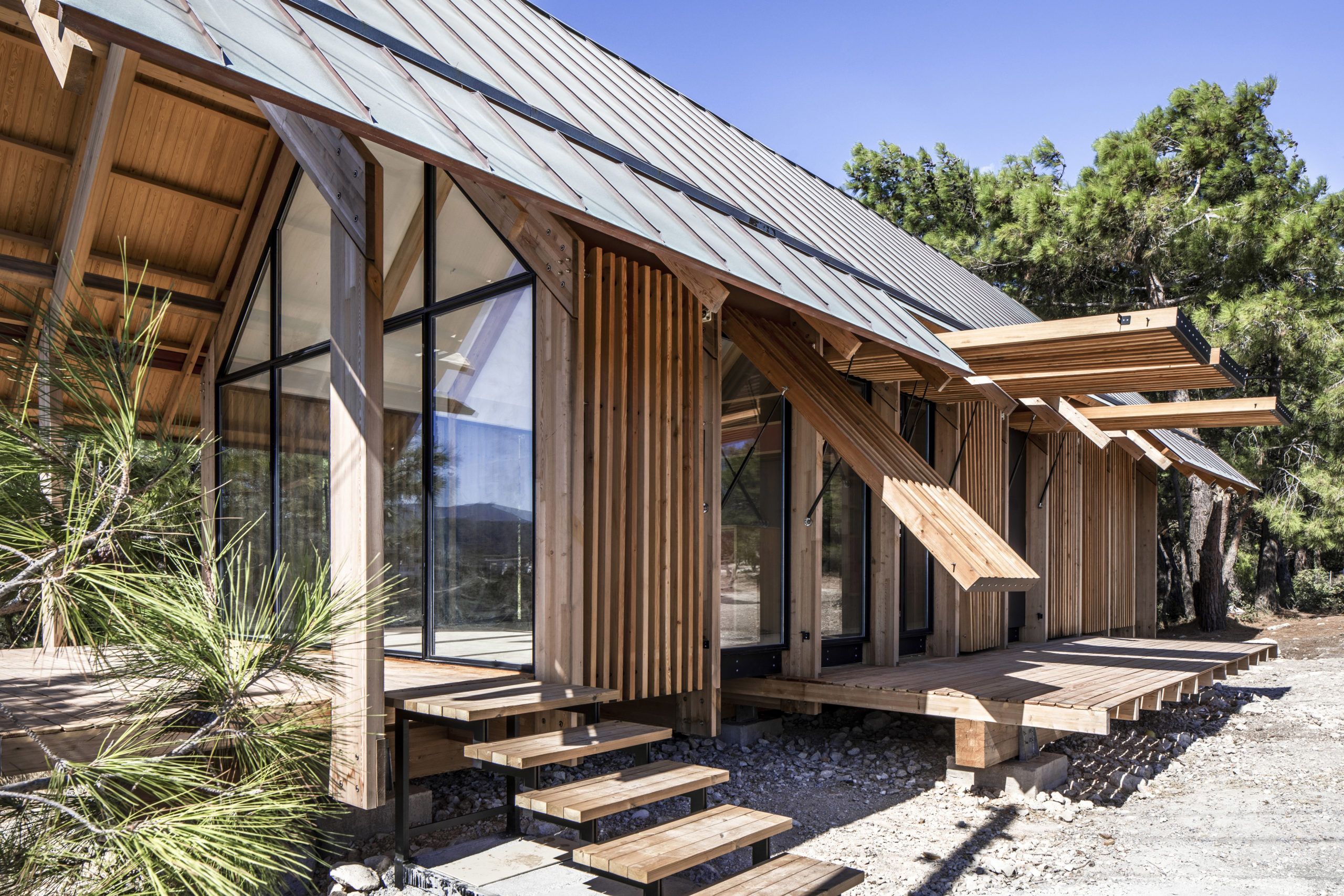 The design for this small-scale, off-grid single-module unit pivots around two timber frames that are prefabricated and then mounted on-site; this solution reduces environmental impact and maximizes the possibilities for the building’s use. Panels of laminated timber shades envelope the large expanses of glazed interior wall, acting as a slatted casing that protects inhabitants from sun exposure. Yet, these wooden slat panels can also be raised to invite natural light into the home. Affixed with hinges just below the overhang, they become wing-like protrusions that extend the sloping diagonals of the pitched roof and transform the building’s profile.
The design for this small-scale, off-grid single-module unit pivots around two timber frames that are prefabricated and then mounted on-site; this solution reduces environmental impact and maximizes the possibilities for the building’s use. Panels of laminated timber shades envelope the large expanses of glazed interior wall, acting as a slatted casing that protects inhabitants from sun exposure. Yet, these wooden slat panels can also be raised to invite natural light into the home. Affixed with hinges just below the overhang, they become wing-like protrusions that extend the sloping diagonals of the pitched roof and transform the building’s profile.
Microlibrary Warak Kayu
By SHAU, Semarang, Indonesia
Popular Choice Winner, 2020 A+Awards, Typology Libraries
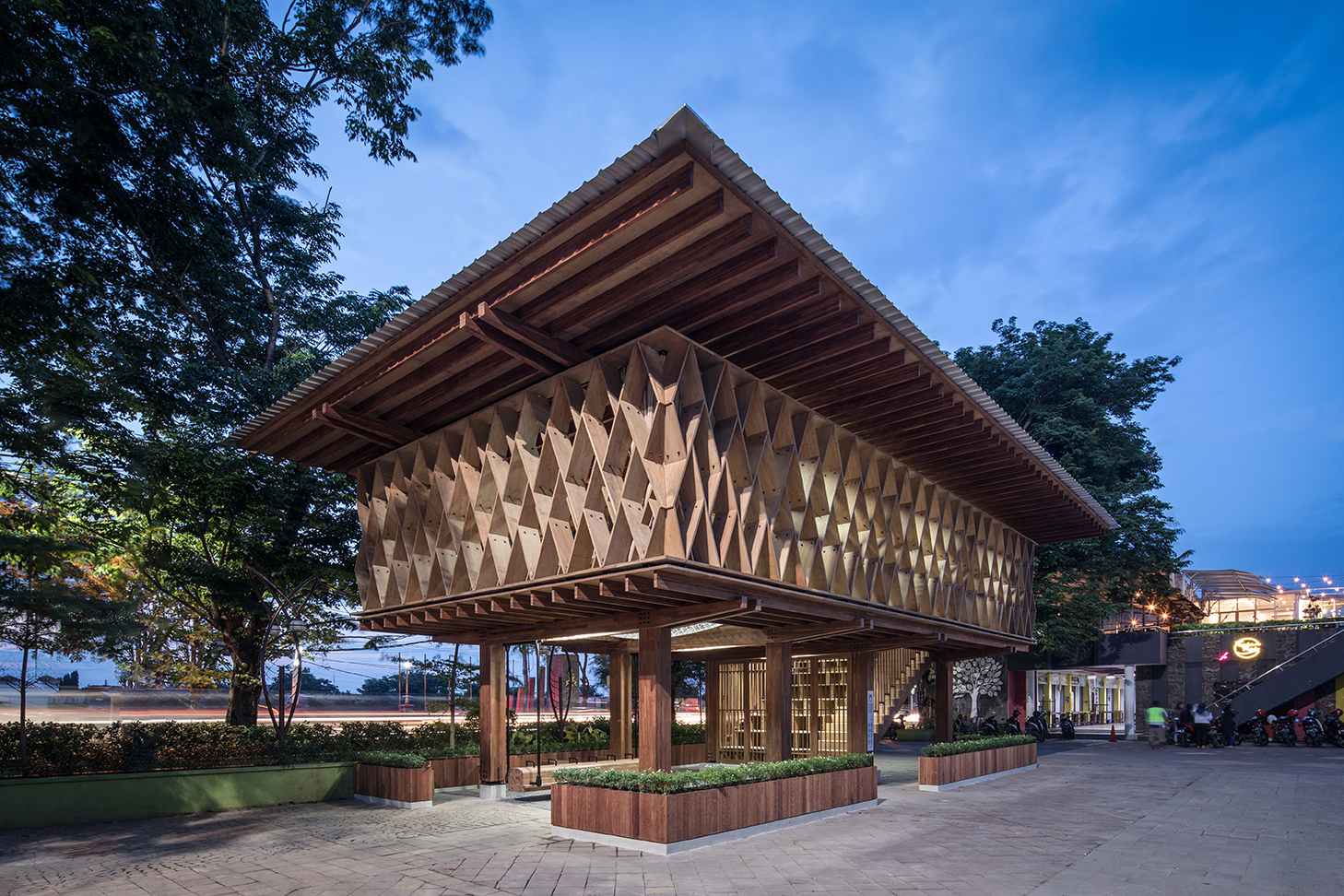
 This multi-programmatic community hub showcases the versatility of Indonesian engineered wood products. Sourced from a nearby local factory, the design unfurled as an exploration of the timber materials’ possibilities; the only parts of the library that do not use wood-based materials are the foundation, footing, and roof.
This multi-programmatic community hub showcases the versatility of Indonesian engineered wood products. Sourced from a nearby local factory, the design unfurled as an exploration of the timber materials’ possibilities; the only parts of the library that do not use wood-based materials are the foundation, footing, and roof.
The eye-catching diamond patterns on the wooden brise soleil are not only meant to turn heads but also augment the passive climate design by maximizing sun protection according to calculated angles and ensuring cross ventilation to wick moisture that might otherwise damage the books.
Restroom in the Mountains
By Atelier Scale, Yantai, China
Jury Vote Winner, 2020 A+Awards, Architecture+Wood
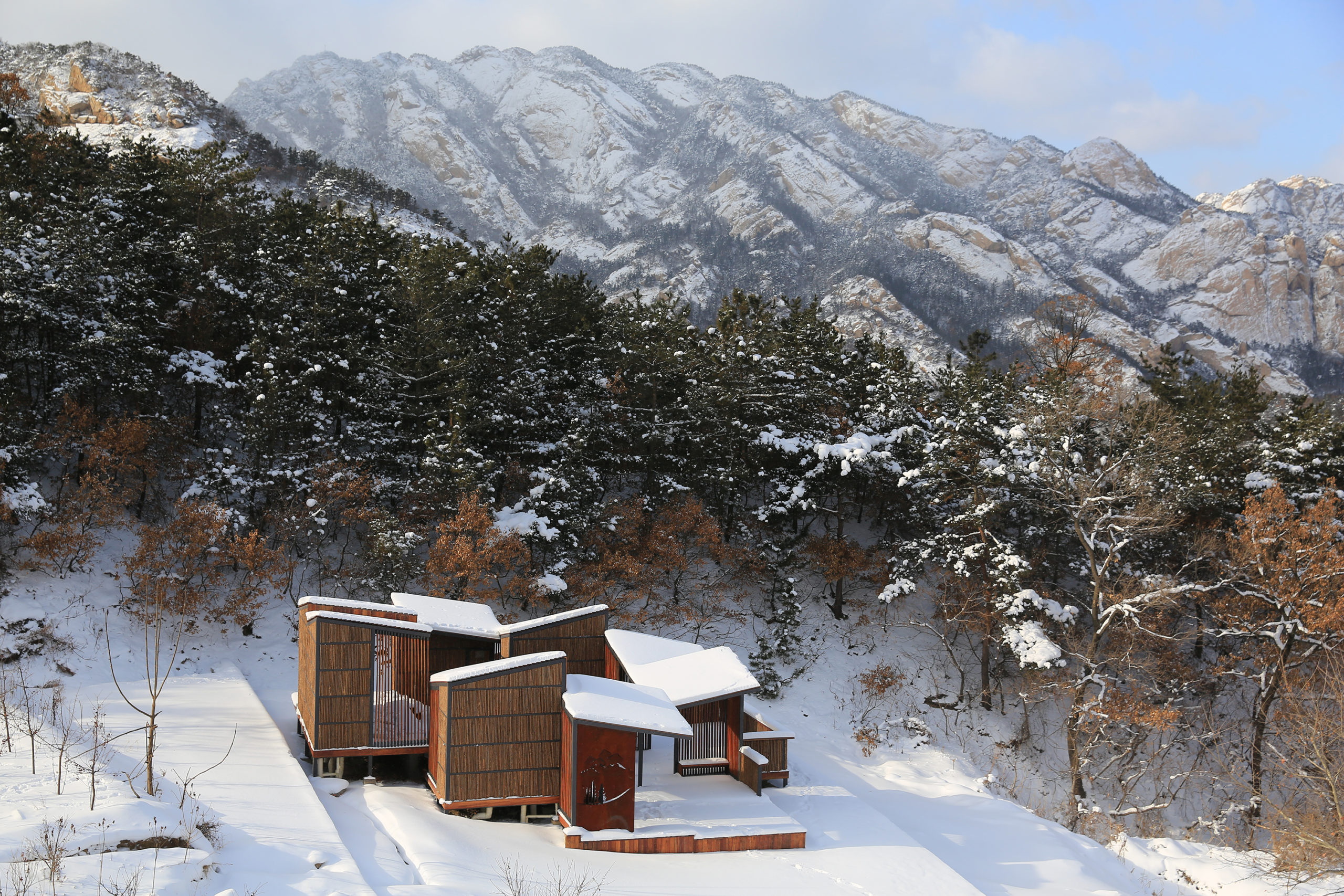
 Nestled in the vast, natural landscape of China’s Kunyu Mountain National Park, this new model for public toilets builds upon the English word for ‘restroom,’ offering a poetic and unobtrusive space for repose in addition to the required facilities. The varied approach to their spacing amplifies the multi-textural patchwork of smooth timber planks, roughly hewn boards, and bark-covered dowl that make up the pavilion. The canopied corridor articulates the transition between the modular toilet pavilions and open-air rest areas—a peek between its wooden slats reveals cinematic vistas of the sweeping, mountainous landscape.
Nestled in the vast, natural landscape of China’s Kunyu Mountain National Park, this new model for public toilets builds upon the English word for ‘restroom,’ offering a poetic and unobtrusive space for repose in addition to the required facilities. The varied approach to their spacing amplifies the multi-textural patchwork of smooth timber planks, roughly hewn boards, and bark-covered dowl that make up the pavilion. The canopied corridor articulates the transition between the modular toilet pavilions and open-air rest areas—a peek between its wooden slats reveals cinematic vistas of the sweeping, mountainous landscape.
Marine Education Center at the Gulf Coast Research Laboratory
By Lake|Flato Architects, Ocean Springs, MS
Jury Vote Winner, 2020 A+Awards, Architecture+Climate Change
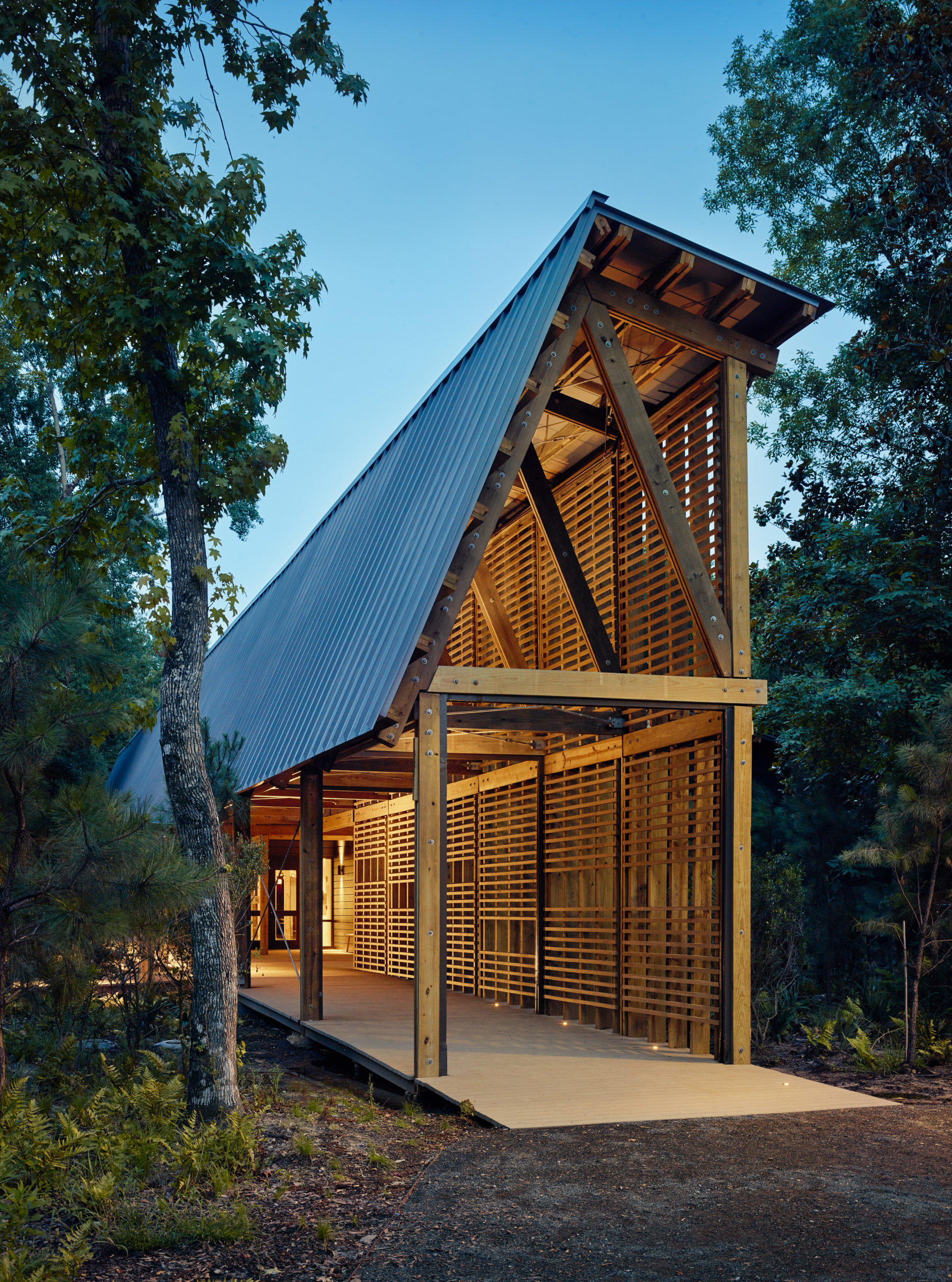
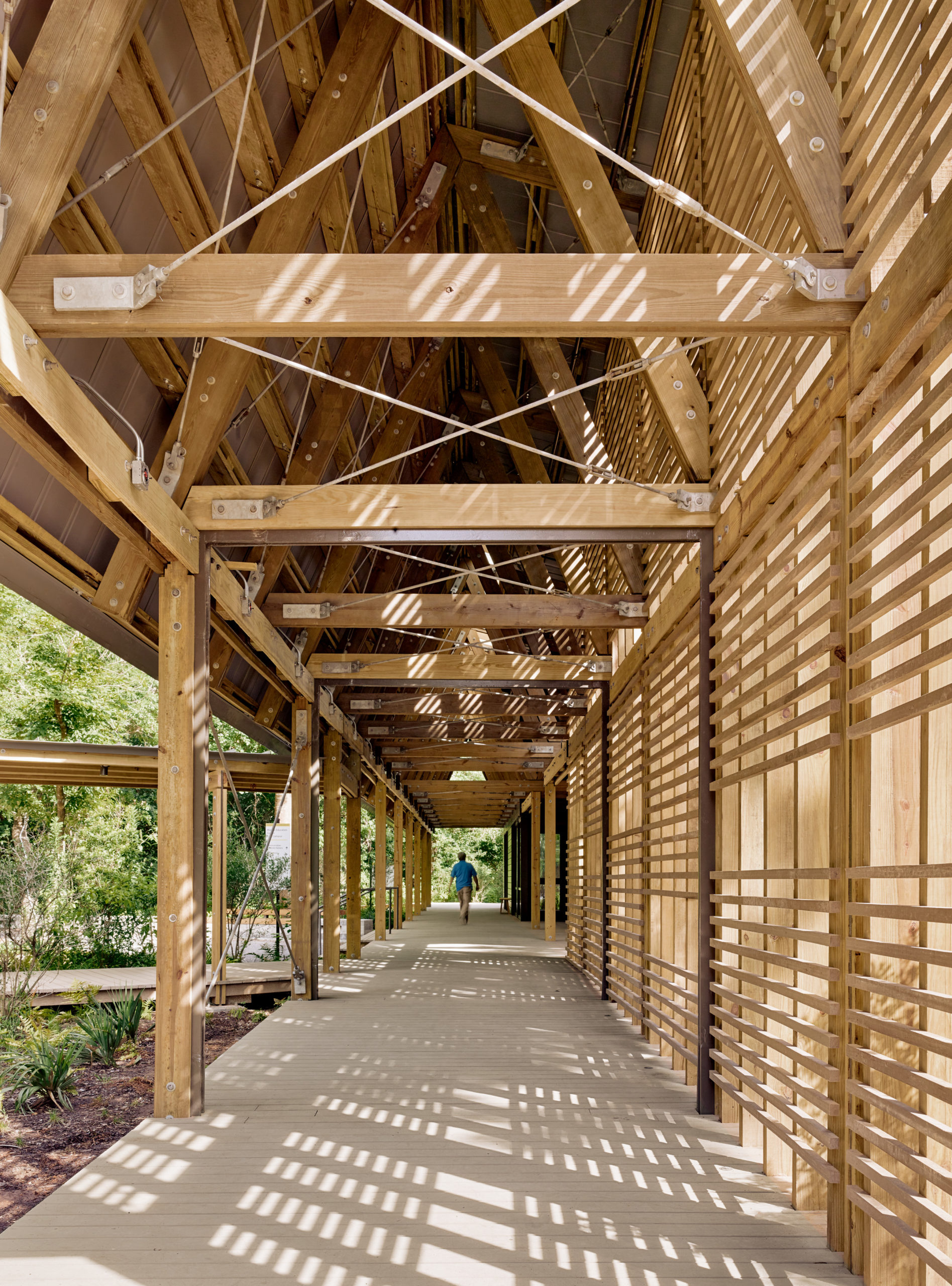 Wooden materials served as a jumping point to integrate these buildings into the surrounding flatwood forest: the interior millwork is made of white oak, and the horizontal panels of the open-air corridors are hewn of southern yellow pine. This conceptual approach exemplifies the aims of the research facility and education center, which promote the ecology of the bayou and tidal wetlands. Hurricane Katrina destroyed the original structure, and the site further ravaged by two subsequent hurricanes; wood was selected as a central material to have minimal impact on the ocean in the event of a fourth natural disaster.
Wooden materials served as a jumping point to integrate these buildings into the surrounding flatwood forest: the interior millwork is made of white oak, and the horizontal panels of the open-air corridors are hewn of southern yellow pine. This conceptual approach exemplifies the aims of the research facility and education center, which promote the ecology of the bayou and tidal wetlands. Hurricane Katrina destroyed the original structure, and the site further ravaged by two subsequent hurricanes; wood was selected as a central material to have minimal impact on the ocean in the event of a fourth natural disaster.
Qishe Courtyard
By ARCHSTUDIO, Beijing, China
Jury Vote and Popular Choice Winner, 2020 A+Awards, Architecture+Renovation
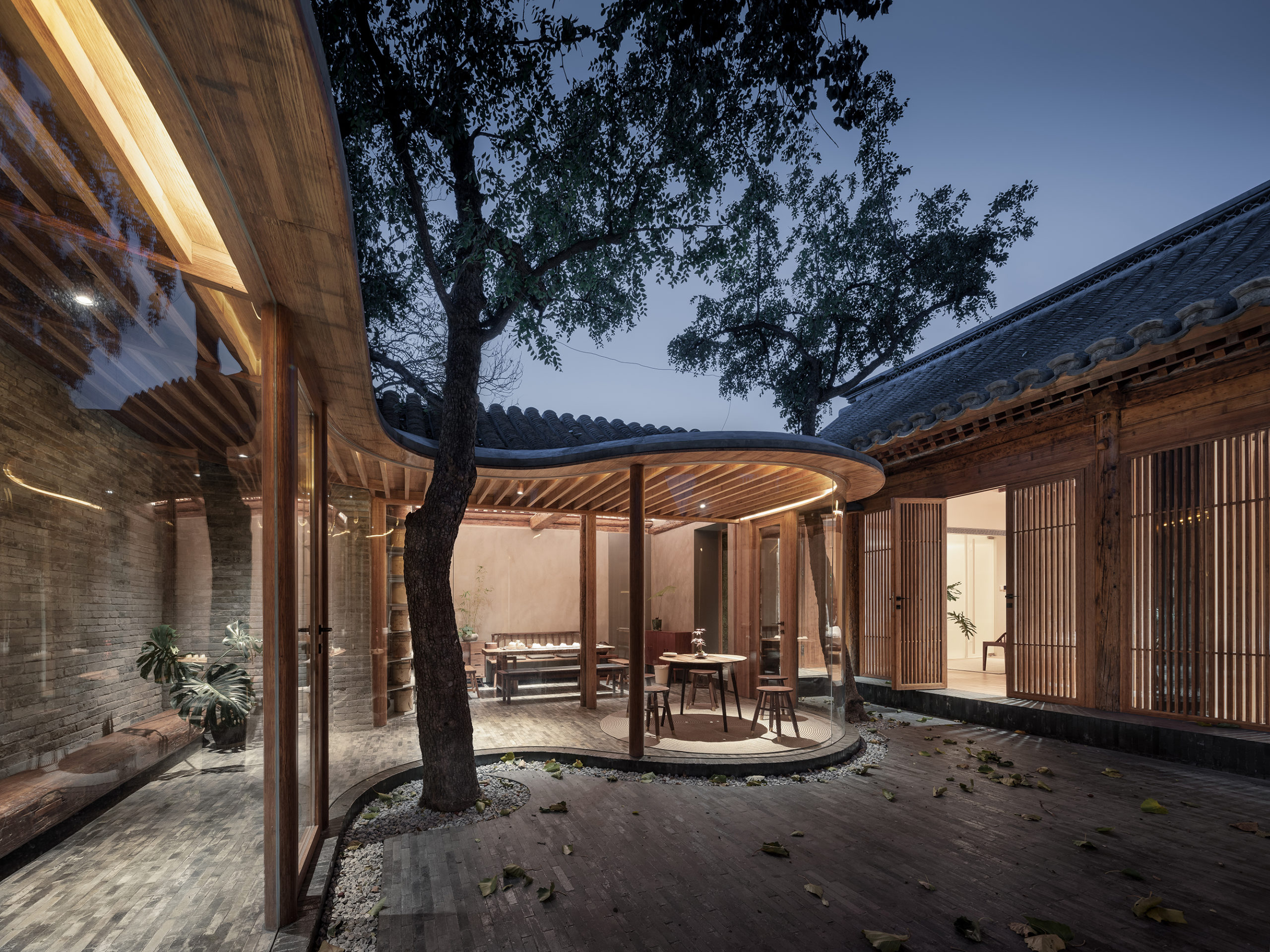
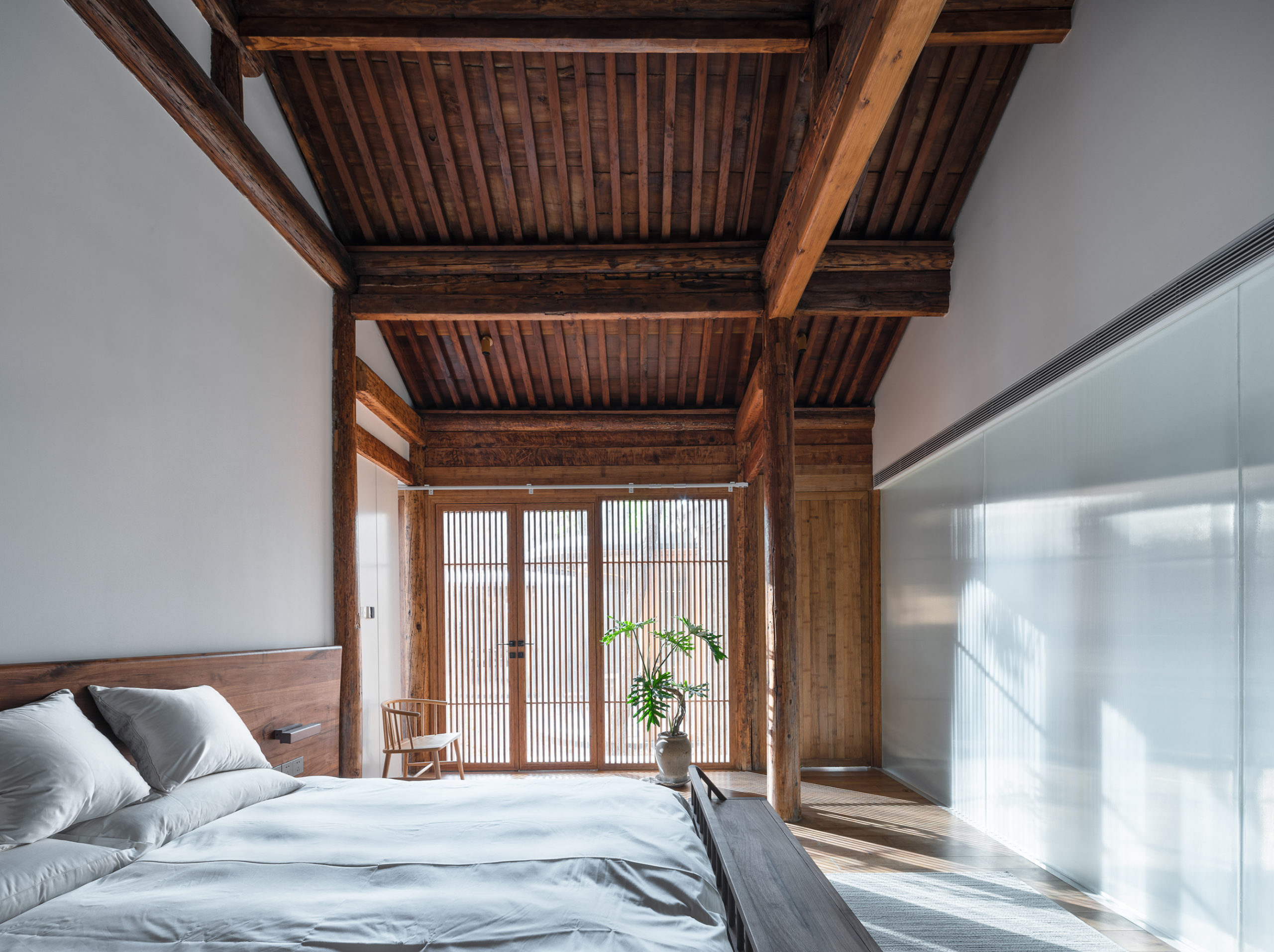 A Siheyuan denotes a typology of traditional Chinese residence where ancillary buildings frame a courtyard on all sides. This renovation project reimagines a three-courtyard Siheyuan by repairing old wooden structures and integrates them with new facilities.
A Siheyuan denotes a typology of traditional Chinese residence where ancillary buildings frame a courtyard on all sides. This renovation project reimagines a three-courtyard Siheyuan by repairing old wooden structures and integrates them with new facilities.
A snaking series of transparent glass panels serves as the primary element to connect the seven houses, at once delineating and enhancing the connectivity between indoors and outdoors. For the more private dwelling spaces, such as the bathrooms and bedrooms, laminated bamboo slats mimic the openness of these large glazed walls; these wooden screens also echo the traditional pine framework of the original buildings.
No Footprint House (NFH)
By A-01 (A Company / A Foundation), Ojochal, Costa Rica
Popular Choice Winner, 2019 A+Awards, Architecture +Sustainability
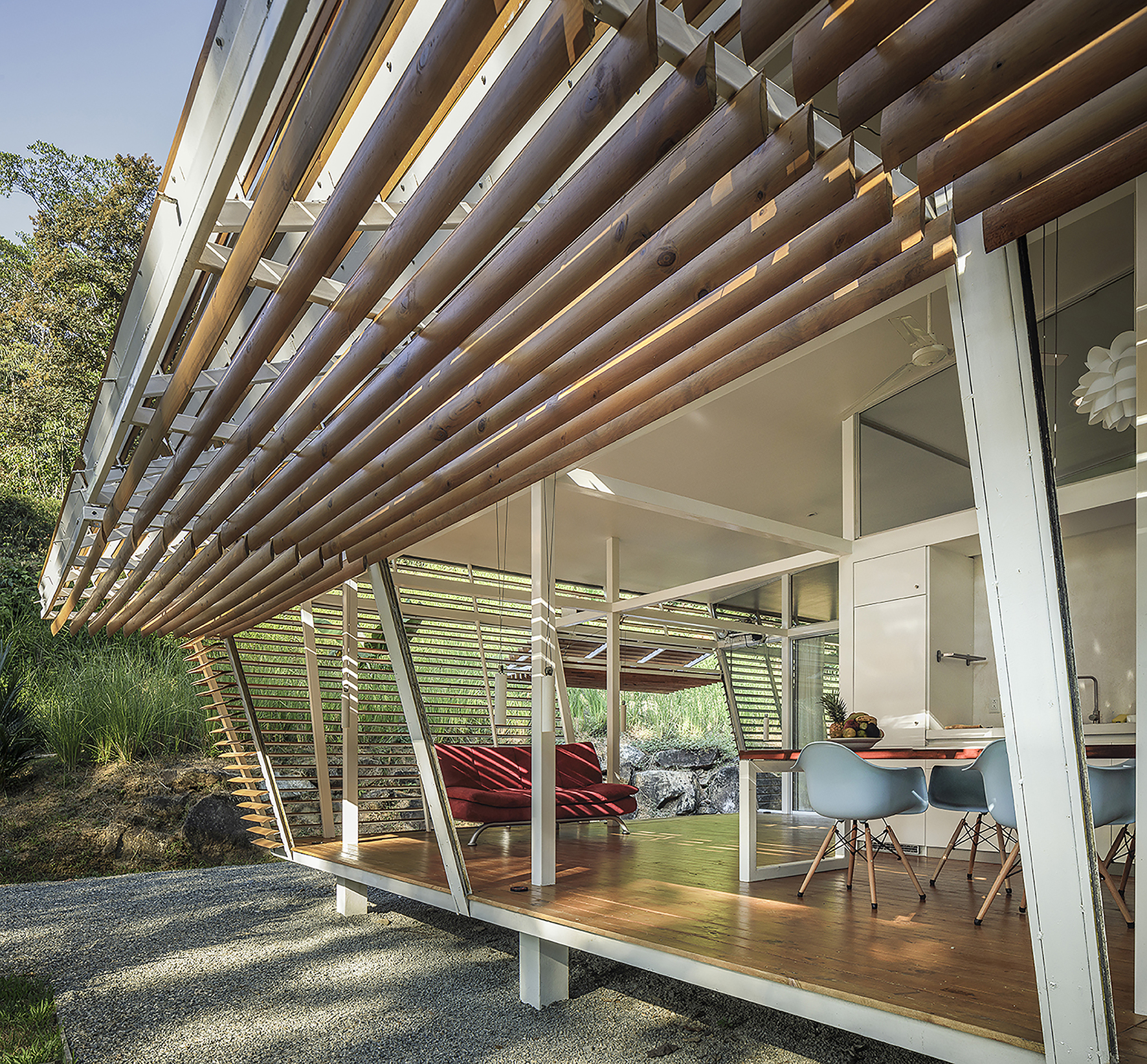
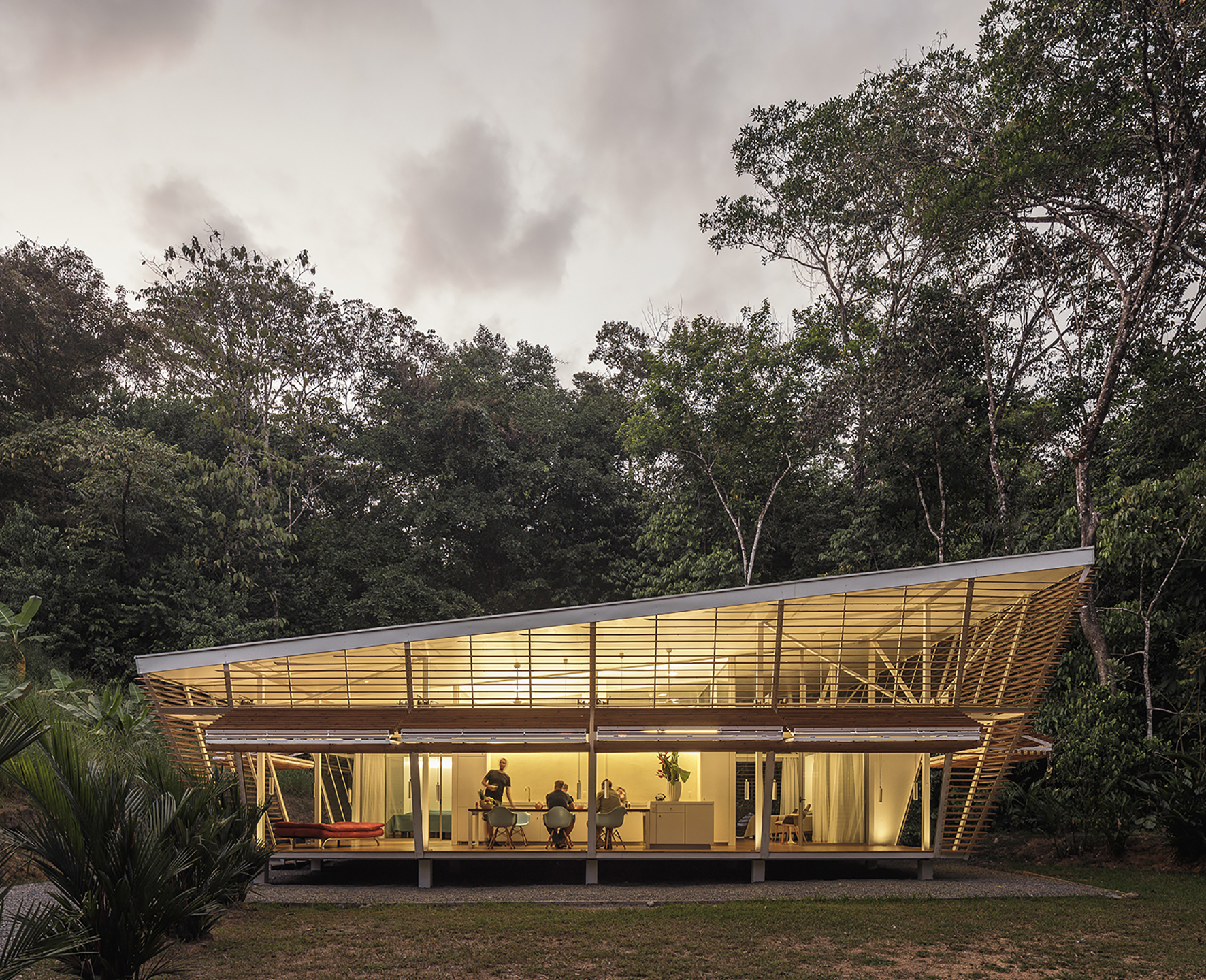 The horizontal slatting on this wooden facade is more than a stylish provision for outdoor living, it is also a practical and economical solution to passive climate control. Specifically engineered for the humid Costa Rican climate, the prototype is currently poised on the edge of extensive tropical rainforests but is prefabricated in Central Valley.
The horizontal slatting on this wooden facade is more than a stylish provision for outdoor living, it is also a practical and economical solution to passive climate control. Specifically engineered for the humid Costa Rican climate, the prototype is currently poised on the edge of extensive tropical rainforests but is prefabricated in Central Valley.
Hinging on an ingenious double-layered wall system, the house comprises a vertical glass panelled interior and inclined exterior wall with adjustable wooden panels. The space left in-between is one of leisure, where inhabitants can simultaneously enjoy the comfort of home and the natural marvels that literally sit at their doorstep.
Community Center of Sandu Poetic Residence
By QIYUE Architects, Zhengzhou, China
Jury Vote Winner, 2020 A+Awards, Architecture+Community
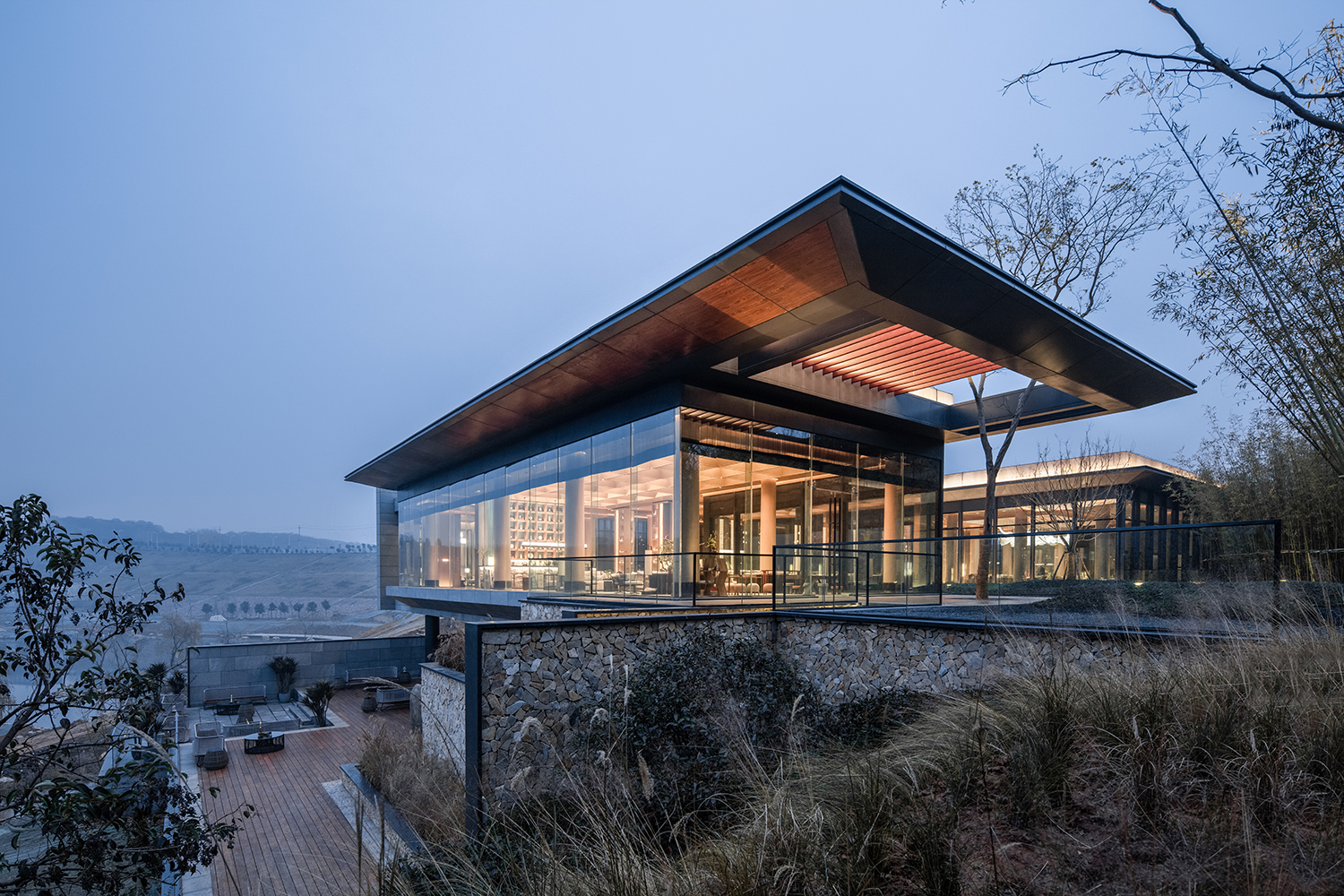
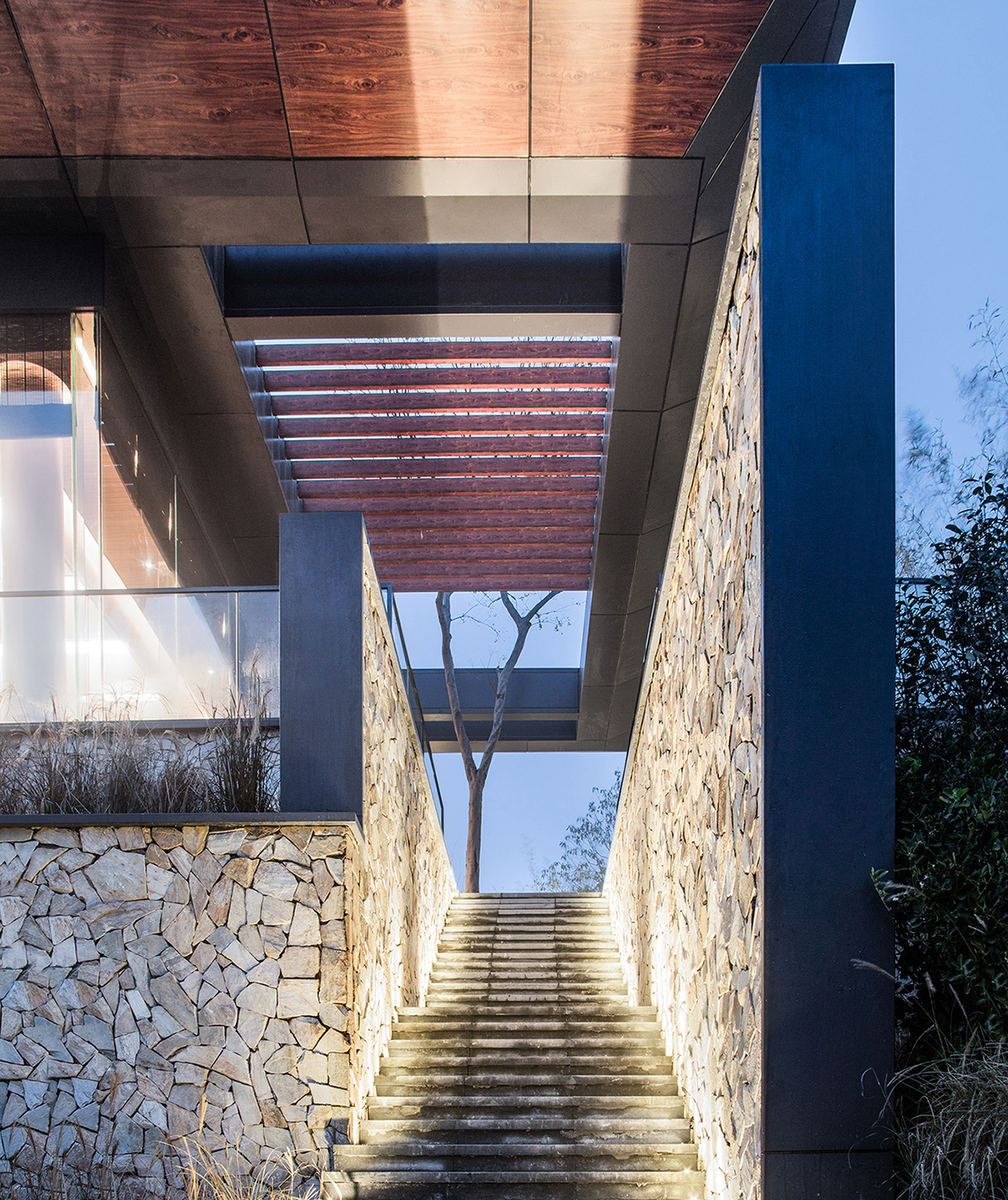 Slatted skylights cantilever over the open terrace and entryway to this community complex for the new Zhengshang area in Central China, blurring the boundary between interior and exterior elements. Aspects of the design evoke the historical context of the nearby Fangding Ancient Village, which is said to have emerged from the mountainous landscape.
Slatted skylights cantilever over the open terrace and entryway to this community complex for the new Zhengshang area in Central China, blurring the boundary between interior and exterior elements. Aspects of the design evoke the historical context of the nearby Fangding Ancient Village, which is said to have emerged from the mountainous landscape.
Just as the rammed earth walls, rubble stone landscaping, and waterfront-facing glass curtain walls seek to integrate the building with the natural site, the wooden slats on the skylight mediate between earth and sky, acting as a poetic invitation for visitors to turn their gaze upwards and contemplate the coexistence of the human and natural worlds.
Skigard Hytte
By Mork Ulnes Architects, Fåvang, Norway
Jury Vote Winner, 2020 A+Awards, Private House (M 1,000-3,000 sq ft)
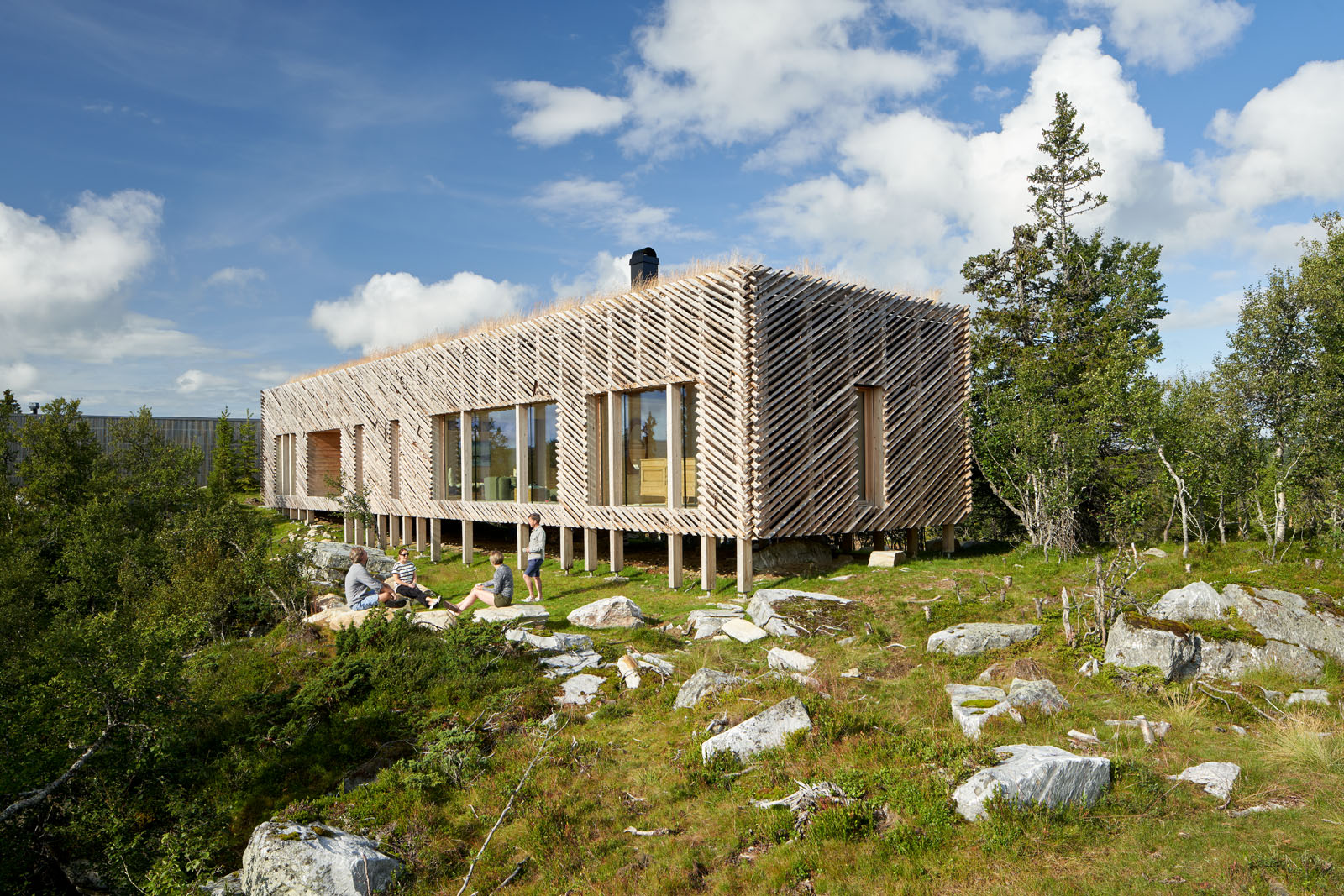
 An ode to Norway’s sustainable forestry, this private residential home is constructed almost entirely from locally-sourced timber and forestry by-products. From insulation to ventilation plates, and even refrigerator handles, most of the amenities are crafted of Norwegian wood.
An ode to Norway’s sustainable forestry, this private residential home is constructed almost entirely from locally-sourced timber and forestry by-products. From insulation to ventilation plates, and even refrigerator handles, most of the amenities are crafted of Norwegian wood.
The design references a medley of quintessential rural building types, from the raised rectilinear volume that echoes local Stabburs (storehouse) to the diagonal spacing of the rough wooden siding that quotes the Skigard (farm fencing) typical to the region. Meanwhile, the soft tufts of the sod roof and the smooth pine paneling of the home’s interior soften the jagged edges of the quarter-cut log facade. This reinterpretation of vernacular tropes seamlessly integrates the cultural and natural landscapes.
The latest edition of “Architizer: The World’s Best Architecture” — a stunning, hardbound book celebrating the most inspiring contemporary architecture from around the globe — is now available. Order your copy today.






 Marine Education Center
Marine Education Center  Restroom in the Mountains
Restroom in the Mountains 